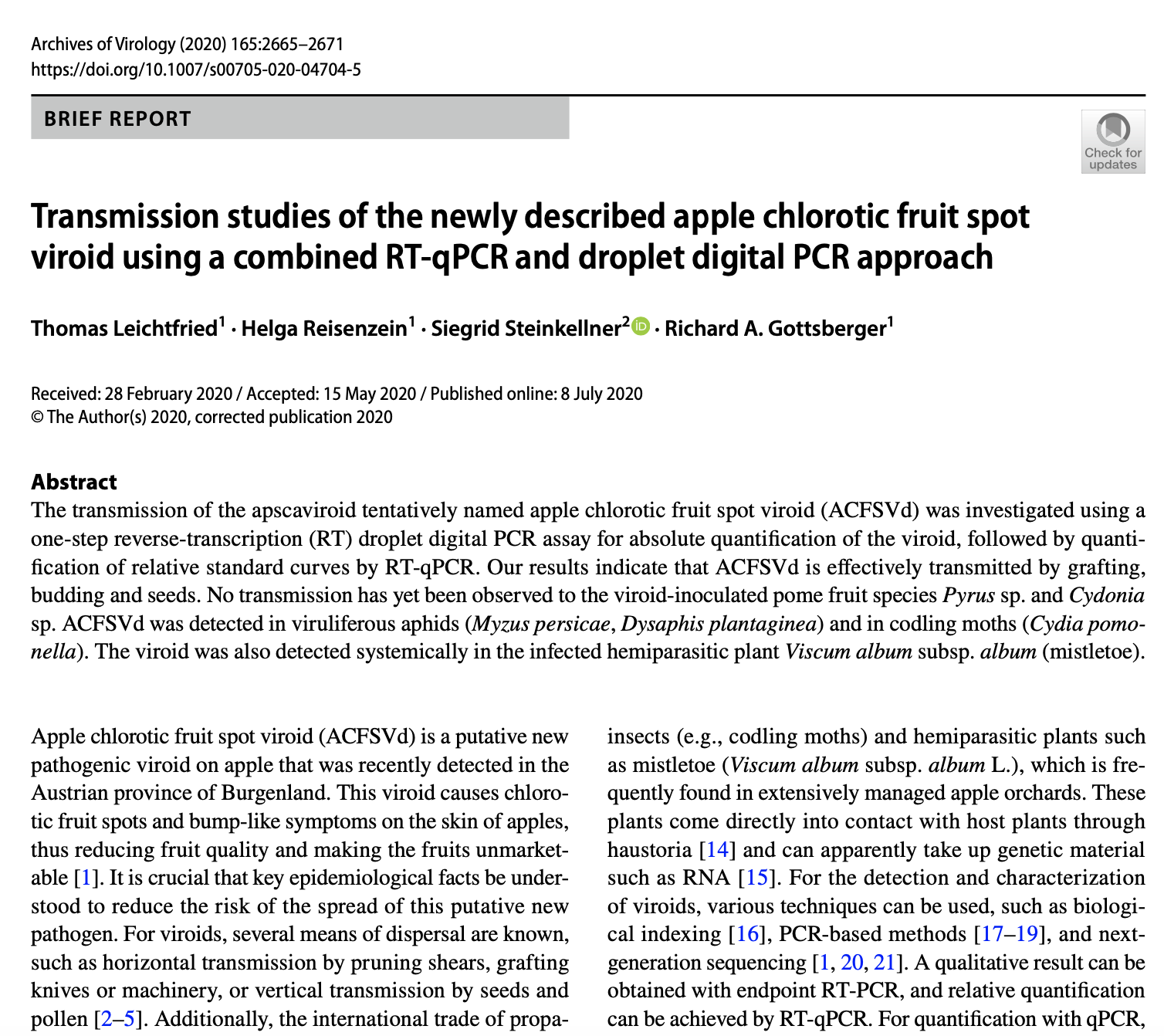
- May 26, 2021
The mode of transmission of apple chlorotic fruit spot viroid was determined by absolute quantification using a combined RT-qPCR on Mic qPCR Cycler and ddPCR on VWR Thermal Cycler.
Thomas Leichtfried, Helga Reisenzein, Siegrid Steinkellner, Richard A. Gottsberger|Institute for Sustainable Plant Protection, Austrian Agency for Health and Food Safety, 1220 Vienna, Austria, Institute of Plant Protection, university of Natural Resources and Life Sciences, 3430 Tulln an der Donau, Austria|Archives of Virology|2020|165:2665-2671 DOI: 10.1007/s00705-020-04704-5
Apple chlorotic fruit spot viroid (ACFSVd) causes chlorotic fruit spots and bump-like skin on apples. As it reduces the quality of the fruit, it is important to determine the modes of transmission to reduce the spread of these pathogen. Viroids are obligate cell parasites, meaning that absolute target concentration of viroid per sample using classical molecular methods is not possible. To combat this, digital PCR is an alternative as reference to a calibration curve is not required. In this study, they addressed transmission by insects, sap inoculation, infected scions and seeds. Plant material such as skin, seeds, twigs, leaves and buds was collected from symptomatic apples infected with ACFSVd isolate from the Austrian province of Burgenland and total RNA was extracted. Aphids and codling moth larvae feeding on symptomatic trees were also collected and total RNA was collected. The study combined ddPCR and standard curves generated by RT-qPCR for relative quantification of the viroid based on absolute quantities (target copies). Only the positive control was required to be absolutely quantified using ddPCR using VWR Thermal Cycler which can then be used for defined standard curves using a newly designed RT-qPCR using Mic qPCR Cycler. The results indicated transmission occurs by grafting, budding and seeds. No transmission was detected to the viroid-inoculated pome fruit species Pyrus sp. and Cydonia sp., but was detected in viruliferous aphids and in codling moths.